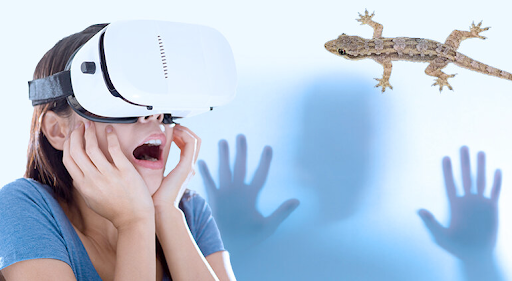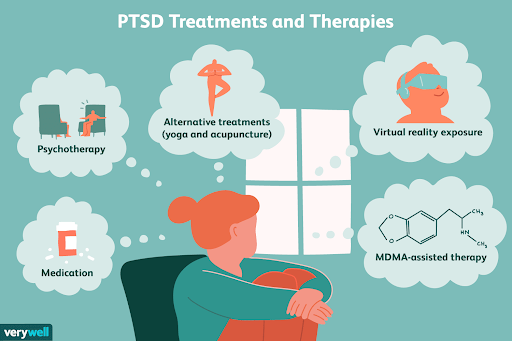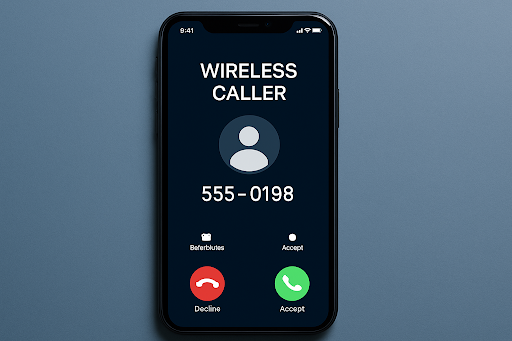
The entire procedure of work, communication, and healing has changed now. An innovation in mental health care is VR therapy. Once the domain of video gaming, VR therapy has now crept into therapy rooms. Just picture facing your fears, fighting social anxiety, and sharpening mindfulness, all while wearing the goggles.
Sounds like science fiction? Well, not more. Very much a contemporary thing, virtual reality may be aiding with emotional well-being as we speak. But does VR therapy really heal?
Read through this entire session and marriages between techniques and therapy, discover what is true, discover what is good, and discover the bad in such an alliance.
What Is Virtual Reality Therapy, and What Is Its Mechanism of Action?
VR therapy stands for virtual reality therapy. It is a form of treatment in which a computer-generated environment simulates real-world or imagined situations. The patient is placed in a fully immersive 3D environment through a headset and participates in a virtual world.
This can include everything from:
- A peaceful beach for mindfulness practice,
- A crowded street to address social anxiety,
- Or even a replica of a traumatic event in controlled exposure therapy.
Mental health professionals guide the process by remaining focused on each patient’s therapeutic goals. This constitutes a safe space for the patients to confront their fears, learn to manage them, and develop their resilience.
The Scientific Realm of the Interaction of Virtual Reality with Mental Health Treatment
So, what makes VR therapy more than just a cool tech gimmick?
It is in immersion that the magic occurs. Research shows that the brain is wired differently by immersion compared to traditional talk therapy. With the use of virtual reality as a treatment, therapists may more easily engage patients, particularly those who struggle to put their issues into words, because it leads to authentic emotional-physiological responses.
In a study published in JMIR Mental Health in 2021, a significant reduction of anxiety, depression, or post-traumatic stress disorder (PTSD) symptoms was observed in cases availing VR therapy when compared to control groups. The science is catching up, and it’s saying this might actually work.
Common Mental Health Conditions Treated With VR Therapy
Among the applications of virtual reality therapy, mental health maps cover a wide range:
1. VR for Anxiety and Phobia Management
Flying, heights, and public speaking may make your heart race, but with the help of VR therapy, you can expose yourself to these fears in environments that are safe and controlled. You don’t even need to get on an airplane; just slip on the headset.
Through gradual exposure, your brain is desensitized so that, over time, that overwhelming fear response is reduced. It’s basically the same as with regular exposure therapy, except with much more immersion.
2. In PTSD Treatment Using VR
For those who experience PTSD, specifically veterans and survivors of trauma, VR can recreate environments that are usually triggering for patients in the context of therapy, processing, and desensitisation.
One such program, Bravemind, developed out of USC’s Institute for Creative Technologies, has shown promise in military settings.

3. VR Therapy for Depression and Mood Disorders
Though there isn’t one particular scene to recreate for depression, VR can provide simulations that teach mindfulness, promote positive reinforcement, or recreate motivating situations.
These applications serve to interrupt the cycles of negative thought and guide the user back into engagement with the world.
4. Can VR Help With Social Anxiety and Aubtism?
Yes—big time. People with social anxiety or the autism spectrum may find social situations an uphill task. It is in this context that virtual reality provides a good opportunity for them to practice conversation skills, body language, and social cues, away from the judgmental gaze of the real world.
Like one rehearses real life, except that it is safe and has a reset button.
Benefits of VR Therapy Over Traditional Methods
Now, let’s talk perks.
- Controlled exposure: One can modulate the environment, intensity, and pace things that are impossible in real life.
- Accessibility: One can practice virtual reality therapy from home, which is helpful for individuals unable to travel or who prefer to be treated in their environment
- Enhanced engagement: Many users have commented that VR feels less scary than traditional therapy and keeps them more engaged.
Sometimes, just the newness of the tech helps the therapy process feel less intimidating, especially for younger users.
Is VR Therapy Safe and Effective? What Studies Say
Generally speaking, it does. There has been growing evidence for the effectiveness of VR therapy. That being said, it is not a miracle cure and is not something that will work for everyone.
Some users experience motion sickness while using VR; others find the whole experience too intense.
With the help of trained professionals and careful planning of the actual sessions, however, tolerance to VR therapy will be quite accepted for most, with several users stating that they benefited enormously from the treatment of their symptoms.
Real-Life Case Studies: How Virtual Reality Changed Lives
Let’s take a look at some real people behind the headsets.
- Emma, 32, social anxiety: Emma avoided public transport for years. After six sessions of VR therapy simulating busy trains and buses, she finally managed a solo Tube journey in London.
- Mike, 40, combat PTSD: A veteran, Mike got a chance to use VR to relive the trauma scenes in a controlled environment. His nightmares and flashback incidents drastically reduced as the months rolled on.
These aren’t isolated stories. They reflect the growing potential of VR as a healing tool.
Limitations and Challenges of VR-Based Mental Health Therapy
Of course, nothing’s perfect.
- High costs: The equipment and software can be expensive, especially for smaller clinics or individuals.
- Tech literacy required: Not everyone is comfortable with VR tech.
- Limited availability: While growing, access to VR therapy is still patchy across the UK and the US.
- Not a replacement: Virtual reality (VR) therapy supplements trained professionals rather than being utilized for treatment purposes.
However, this is only one of the many tools available to an effective therapist.
Who really needs virtual reality therapy?
Virtual-reality therapy is not limited to just gamers or technical buffs. It’s for:
- People with specific phobias,
- Veterans or trauma survivors,
- Teenagers with social anxiety,
- Adults struggling with depression,
- Or anyone open to a new way of healing.
That said, people with severe psychosis or cognitive impairments might not be suitable candidates. Always consult a mental health professional.
How to Access VR Therapy: Options for Clinics and Home Use
Access is improving, with multiple options emerging:
- Specialist clinics offering VR-assisted therapy sessions
- Apps and at-home kits for guided self-therapy (like Psious or Oxford VR)
- University programs or pilot trials offering free or subsidised services
Even some NHS trusts in the UK are exploring VR-based interventions.
Cost of VR Therapy: Is It Affordable and Covered by Insurance?
Costs vary. A comprehensive therapy for VR can cost anywhere from £300 to about £2000, depending on the provider with which it is contracted and how long it is to last. Some insurance providers in the US are beginning to add it to their list of reimbursables; in NHS England, coverage is limited at the moment, but it is possibly growing.
Visit some private insurers or employer-sponsored plans.
The Future of Virtual Reality on Mental Health Treatment
The future looks promising.
Already, we see the AI-fueled virtual therapists. Gamified wellness applications and virtual reality platforms are being created right now to cater specifically to adolescents and seniors.
VR therapy might even very soon become mainstream in the next decade as costs decline and accessibility to such facilities improves. It would not take much imagination to see every therapist with a VR setup in their office.
Final Thoughts: Is VR Therapy the Future of Mental Healthcare?
So, can virtual reality improve mental health? In many instances, yes. Not a silver bullet, but it can change the game. It fuses empathy with technology, therapy with immersion, and with that, hope and innovation.
VR therapy represents a fresh path forward. One where healing can happen in a simulated world, but has very real outcomes in the one we live in.
Feeling curious about trying VR therapy? Just yet, speak with a professional mental health care clinician about whether it is good for you or not.
FAQs
What are the five methods to improve mental well-being?
Exercise, eat a balanced diet, sleep well, be mindful and stay connected.
What are the applications of VR in psychology?
In psychological research and therapy, VR replicates controlled settings to treat several mental health conditions through confrontation therapy and other skill-building exercises, such as anxiety, PTSD, and phobias.
How does virtual reality help in improving mental health?
Virtual reality can allow safe, measured therapeutic experiences, which can help to lower anxiety, phobias, post-traumatic stress disorder, and emotional control.


